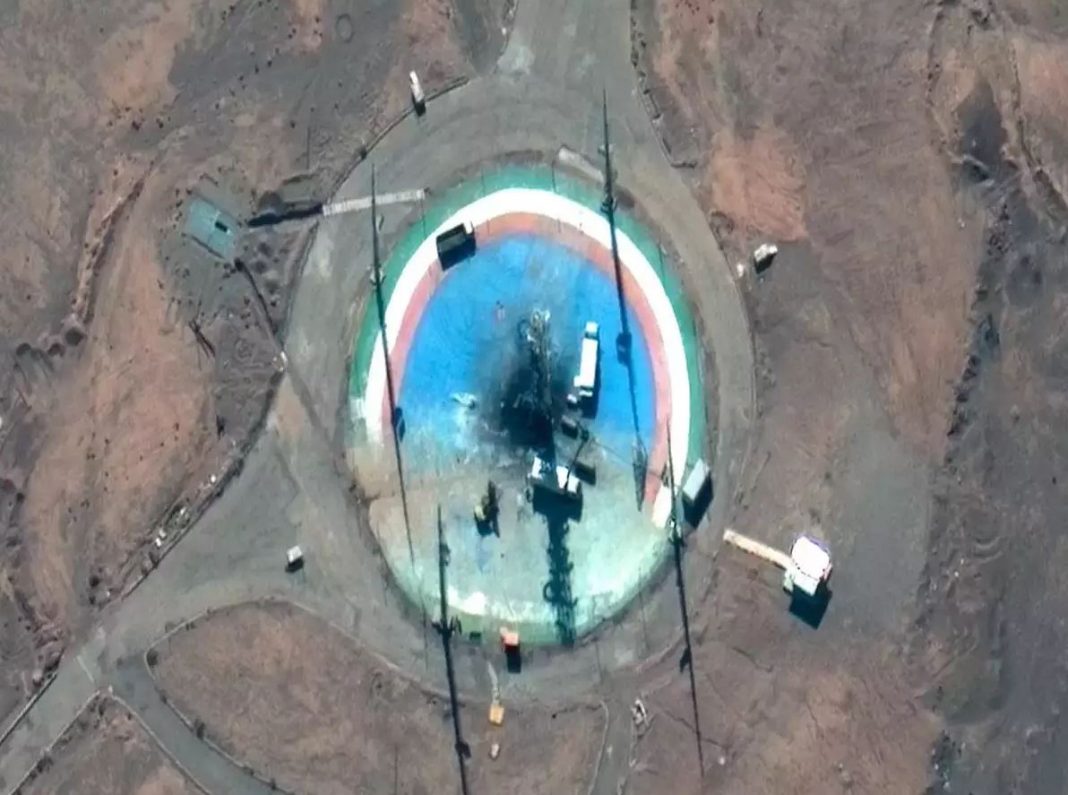Iran is likely to have experienced another failed launch of a satellite-carrying rocket while attempting to revive a programme that has been criticised by the West. This comes as Tehran prepares to enter into last-minute negotiations with world powers in Vienna in order to save its shattered nuclear deal.
The Associated Press obtained satellite photographs from Maxar Technologies on Sunday that show burn marks on a launch pad at Iran’s Imam Khomeini Spaceport, which is located in the country’s remote Semnan region.
A rocket stand on the pad looks to have been charred and destroyed, and cars have gathered around it. A nearby item, which may be a component of the gantry, is visible.
Because the gantries are lowered before to takeoff, most successful launches do not result in damage to the rockets themselves.
Iran also has a history of not admitting unsuccessful efforts to put satellites into orbit, which it broadcasts on its state-run television networks soon after they are successful.
Planet Labs PBC photos taken separately indicate that the attempted launch happened somewhere between Friday and Saturday morning. In response to a request for comment, Iran’s Permanent Mission to the United Nations did not react.
According to Army Lt. Col. César Santiago, a Pentagon official, the Space Command of the United States military did not identify any launches over the weekend. This implies that the rocket never made it off the launch pad in the first place.
According to Jeffrey Lewis, an analyst at the James Martin Center for Nonproliferation Studies at the Middlebury Institute of International Studies who first detected the attempted launch with colleagues, the rocket involved looks to have been Iran’s Zuljanah satellite launch vehicle.
According to reports, the gantry that was apparently damaged looked similar to another that had previously been used in the successful launch of a Zuljanah rocket last year. The Zuljanah is named after Imam Hussein, a grandson of the Prophet Muhammad and a key figure in the Shiite faith who was massacred with his fighters at Karbala in the 7th century.
It is yet unknown what might have triggered the explosion. Lewis said that although the first two stages of a Zuljanah are powered by solid fuel, the third stage is powered by liquid fuel and would have required to be fuelled on the launch pad.
The Islamic Republic of Iran has launched many short-lived satellites into orbit during the previous decade, as well as a monkey into space in 2013.
However, the software has been experiencing some difficulties recently. The Simorgh programme, which is another satellite-carrying rocket, has seen five failure launches in a succession. Three researchers were murdered in a separate fire at the Imam Khomeini Spaceport in February 2019, according to officials at the time of the incident.
The launch pad utilised in the most recent launch is still scarred from an explosion that occurred in August of this year, which attracted the attention of then-President Donald Trump himself. The failure of the launch was subsequently shown in what looked to be a secret surveillance photograph posted on Twitter.
Because of the repeated failures, there was widespread suspicion of foreign meddling in Iran’s nuclear programme, which Trump himself alluded to at the time when he tweeted that the United States “was not involved in the horrific accident.”
There has been no proof shown, however, that any of the failures were the result of foul play, and space launches continue to be a difficult challenge even for the world’s most successful programmes.
By successfully launching a satellite into orbit in April 2020, Iran’s paramilitary Revolutionary Guard unveiled its own covert space programme, which was previously kept secret.
Afterwards, the chief of the United States Space Command described the satellite as “a tumbling webcam in space” that would not offer Iran with critical information, despite the fact that it demonstrated Tehran’s capacity to safely enter orbit.
While this launch occurs at a time when Western officials warn that time is running out to restore Iran’s nuclear agreement with global powers, which saw Tehran substantially restrict its enrichment of uranium in return for the relaxation of economic sanctions, the timing of this launch is significant.
Trump abruptly withdrew from the agreement in 2018, laying the groundwork for years of tensions and mystery assaults throughout the larger Middle East and North Africa region.
President Joe Biden, on the other hand, did not mention Iran in his State of the Union address, which was primarily focused on Russia’s aggression against Ukraine.
Iran’s satellite launches, according to the United States, are in violation of a UN Security Council resolution, and Tehran has been ordered to cease all activities linked to ballistic missiles capable of delivering nuclear weapons.
Iran, which has always claimed that it has no desire for nuclear weapons, has previously insisted that its satellite launches and rocket tests had no military significance.
Iran’s structured military nuclear programme, according to US intelligence services and the International Atomic Energy Agency, was abandoned in 2003, according to the agency.
Today, Tehran enriches uranium to 60 percent purity, which is a short technological step away from weapons-grade levels of 90 percent purity and far more than the 3.67 percent threshold set by the nuclear agreement.
Its stockpile of enriched uranium is also continuing to expand, and foreign inspectors are finding it difficult to keep up with its developments.
Instead of scaling down Iran’s space programme for fear of alienating the West, new hard-line President Ebrahim Raisi is focusing on reviving it. This is in contrast to the previous administration, which scaled back the programme for fear of alienating the West.

